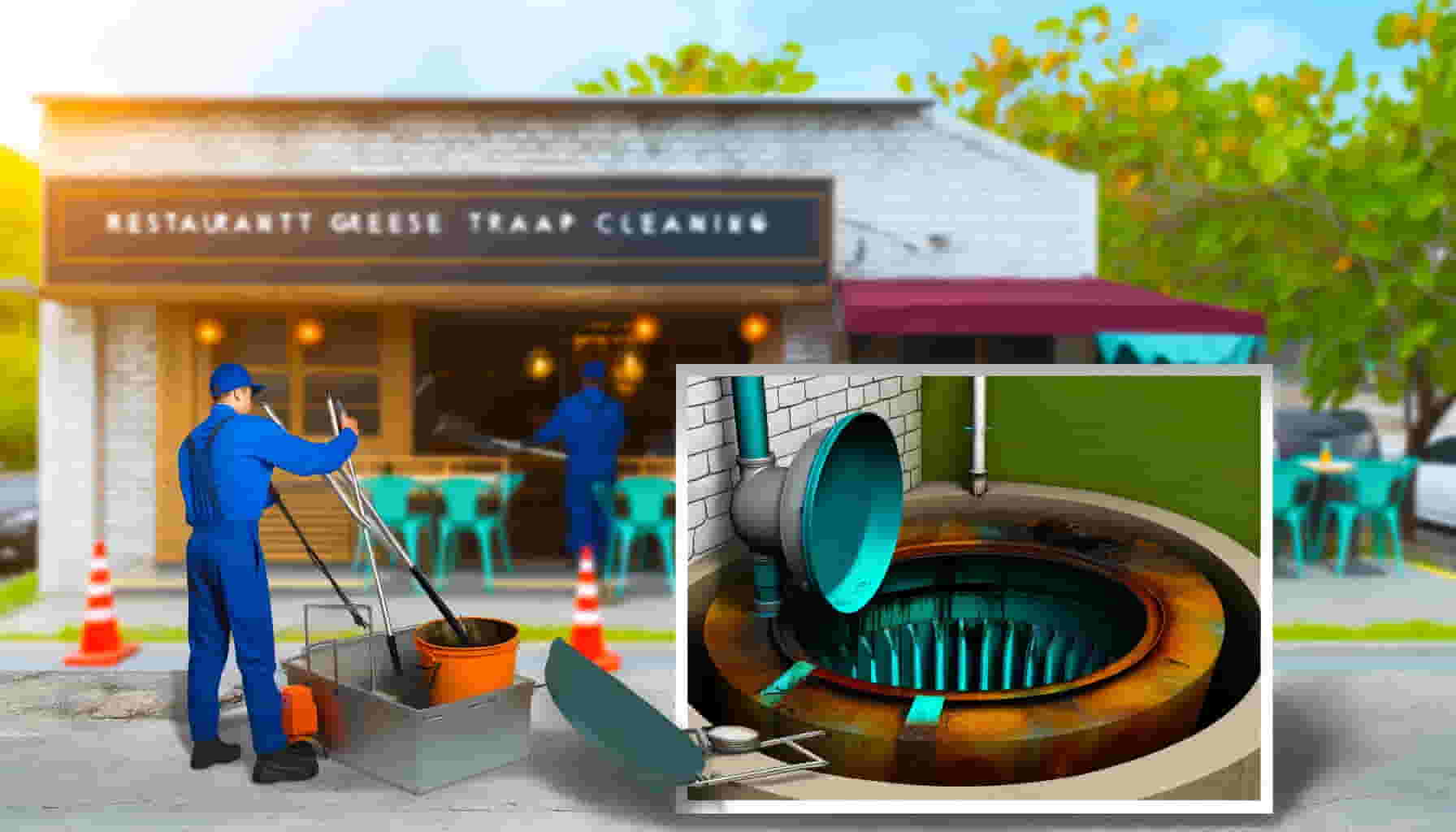The Heart of the Kitchen: A Deep Dive into Restaurant Grease Traps

Imagine your restaurant kitchen bustling with activity. Orders fly in, pans sizzle, and delicious aromas fill the air. What you might not think about at that moment is the unsung hero silently working behind the scenes: the grease trap. This crucial piece of equipment plays a vital role in protecting your establishment, the environment, and public health.
In this article, we’ll delve into the fascinating world of restaurant grease traps. We’ll explore their function, cleaning procedures, regulations, and best practices to ensure your trap operates smoothly and efficiently.
What is a Grease Trap and Why is it Important?
A grease trap is an interceptor installed in the plumbing system that separates fats, oils, and grease (FOG) from wastewater before it enters the sewer system. FOG can wreak havoc on sewer lines, causing clogs, backups, and potential environmental damage. Grease traps effectively capture these substances, preventing them from entering the larger wastewater treatment system.
For restaurant owners, restaurant grease trap cleaning is a crucial responsibility. Not only does it prevent costly plumbing issues and potential fines, but it also contributes to environmental protection and responsible waste management.
How Does a Grease Trap Work?
Grease traps operate on the principle that FOG is lighter than water. Wastewater flows through the trap, where the FOG rises to the surface and accumulates. Baffles within the trap further slow down the flow, allowing FOG to separate more effectively. The remaining wastewater, free of FOG, then exits the trap and flows into the sewer system.
The Importance of Regular Restaurant Grease Trap Cleaning
Grease traps require regular cleaning to function properly. Over time, accumulated FOG can solidify, clog the trap, and hinder its ability to separate FOG from wastewater. This can lead to:
Sewer backups: Overflowing grease traps can cause backups in your own plumbing system or even the municipal sewer line, resulting in costly repairs and potential fines.
Environmental damage: Untreated FOG can clog sewer lines and pollute waterways, harming aquatic life and ecosystems.
Health risks: Overflowing grease traps can create unsanitary conditions and attract pests, posing a potential health hazard.
The frequency of restaurant grease trap cleaning depends on various factors, including:
Restaurant size and volume: Larger establishments with higher FOG production will require more frequent cleaning.
Type of food served: Restaurants with menus heavy in fried foods or oil-based sauces will generate more FOG.
Local regulations: Many municipalities have specific regulations regarding grease trap cleaning frequency.
It’s crucial to consult your local regulations and schedule restaurant grease trap cleaning accordingly. Additionally, implementing best practices like minimizing FOG discharge and using grease interceptor inserts can further reduce cleaning frequency and maintenance costs.
Restaurant Grease Trap Cleaning: A Step-by-Step Guide
While professional cleaning services are highly recommended, understanding the cleaning process can be beneficial. Here’s a simplified overview:
Preparation: Before starting, gather the necessary tools and safety equipment, including gloves, boots, respirators, and cleaning materials. Ensure good ventilation and have disposal containers ready.
Removal of FOG: Skim off the accumulated FOG layer and dispose of it properly. This can involve using absorbent pads, scoops, or pumps.
Wastewater removal: Pump out the remaining wastewater and FOG residue, following local regulations for disposal.
Cleaning the trap: Scrub the interior of the trap with a degreaser and hot water, paying special attention to baffles and corners. Rinse thoroughly and remove any remaining debris.
Inspection and maintenance: Inspect the trap for any damage or cracks and check the baffles for proper positioning. If necessary, replace damaged parts.
Disposal of waste: FOG waste should be disposed of responsibly according to local regulations. Many disposal companies offer specialized FOG collection and recycling services.
Remember, this is a simplified overview. Consulting professional cleaning services and adhering to specific local regulations is crucial for optimal results and compliance.
Best Practices for Grease Trap Maintenance
Beyond regular cleaning, implementing best practices can help prevent clogs and extend the life of your grease trap:
Minimize FOG discharge: Avoid pouring excess grease down drains, and train staff on proper disposal methods. Use grease interceptor inserts or skimmings mats to capture additional FOG.
Schedule regular cleaning: Adhere to local regulations and your specific needs for cleaning frequency.
Maintain proper records: Keep records of cleaning dates and service providers for compliance purposes.
Educate staff: Train staff on the importance of grease trap maintenance and proper FOG disposal practices.
By following these best practices and scheduling regular restaurant grease trap cleaning, you can ensure your trap functions optimally, protecting your business, the environment, and public health. Contact professional restaurant grease trap cleaning services for assistance.
Additional Resources:
National Restaurant Association: https://restaurant.org/

Leave a Reply